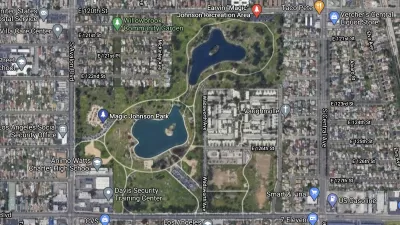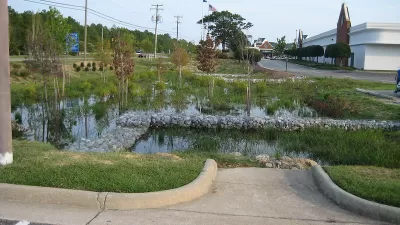The newly opened, $103 million Lick Run Greenway started as a court ordered stormwater solution. Local leaders hope it will be that and much more.

The $103 million Lick Run Greenway opened this week in Cincinnati. The park doubles as a "bio-engineered greenway," running between Queen City and Westwood avenues in South Fairmount.
According to an article by Sina Gebre-Ab and Marial Carbone, the project "began its life as a court-ordered solution to the 400 million gallons of raw sewage overflowing into Mill Creek from Cincinnati sewers each year," by diverting stormwater from sewers.
"Before this project, there was no drop of water, no drop of rain that could make its way to the creek without first getting mixed with sewage," said MSD chief operating officer Marylynn Lodor. "If you stop and think about that… every gallon that we see running through the Lick Run Greenway, that is avoided combined sewer overflows.”
Officials with the Metropolitan Sewer District attending the greenway's grand opening this week say the project has already improved conditions enough for the emergence of nine new species of fish in the creek.
South Fairmount Community Council President Jim Casey is also quoted in the article talking about the social appeal and economic development potential of the park.
“It's that community asset that finds a way to bring people together,” said South Fairmount Community Council president Jim Casey on Tuesday. “Once you have that attraction, people say, ‘Maybe there are some opportunities to build something new. Maybe there is an opportunity rehab something existing.’”
For more on the potential benefits green stormwater infrastructure, see also new research by Christopher Tirri and Mahbubur Meenar, shared by Planetizen this week.
FULL STORY: Lick Run Greenway, a $103M solution to a years-long problem, is South Fairmont 'starting again'

Study: Maui’s Plan to Convert Vacation Rentals to Long-Term Housing Could Cause Nearly $1 Billion Economic Loss
The plan would reduce visitor accommodation by 25,% resulting in 1,900 jobs lost.

North Texas Transit Leaders Tout Benefits of TOD for Growing Region
At a summit focused on transit-oriented development, policymakers discussed how North Texas’ expanded light rail system can serve as a tool for economic growth.

Why Should We Subsidize Public Transportation?
Many public transit agencies face financial stress due to rising costs, declining fare revenue, and declining subsidies. Transit advocates must provide a strong business case for increasing public transit funding.

How to Make US Trains Faster
Changes to boarding platforms and a switch to electric trains could improve U.S. passenger rail service without the added cost of high-speed rail.

Columbia’s Revitalized ‘Loop’ Is a Hub for Local Entrepreneurs
A focus on small businesses is helping a commercial corridor in Columbia, Missouri thrive.

Invasive Insect Threatens Minnesota’s Ash Forests
The Emerald Ash Borer is a rapidly spreading invasive pest threatening Minnesota’s ash trees, and homeowners are encouraged to plant diverse replacement species, avoid moving ash firewood, and monitor for signs of infestation.
Urban Design for Planners 1: Software Tools
This six-course series explores essential urban design concepts using open source software and equips planners with the tools they need to participate fully in the urban design process.
Planning for Universal Design
Learn the tools for implementing Universal Design in planning regulations.
Ascent Environmental
Borough of Carlisle
Institute for Housing and Urban Development Studies (IHS)
City of Grandview
Harvard GSD Executive Education
Toledo-Lucas County Plan Commissions
Salt Lake City
NYU Wagner Graduate School of Public Service




























